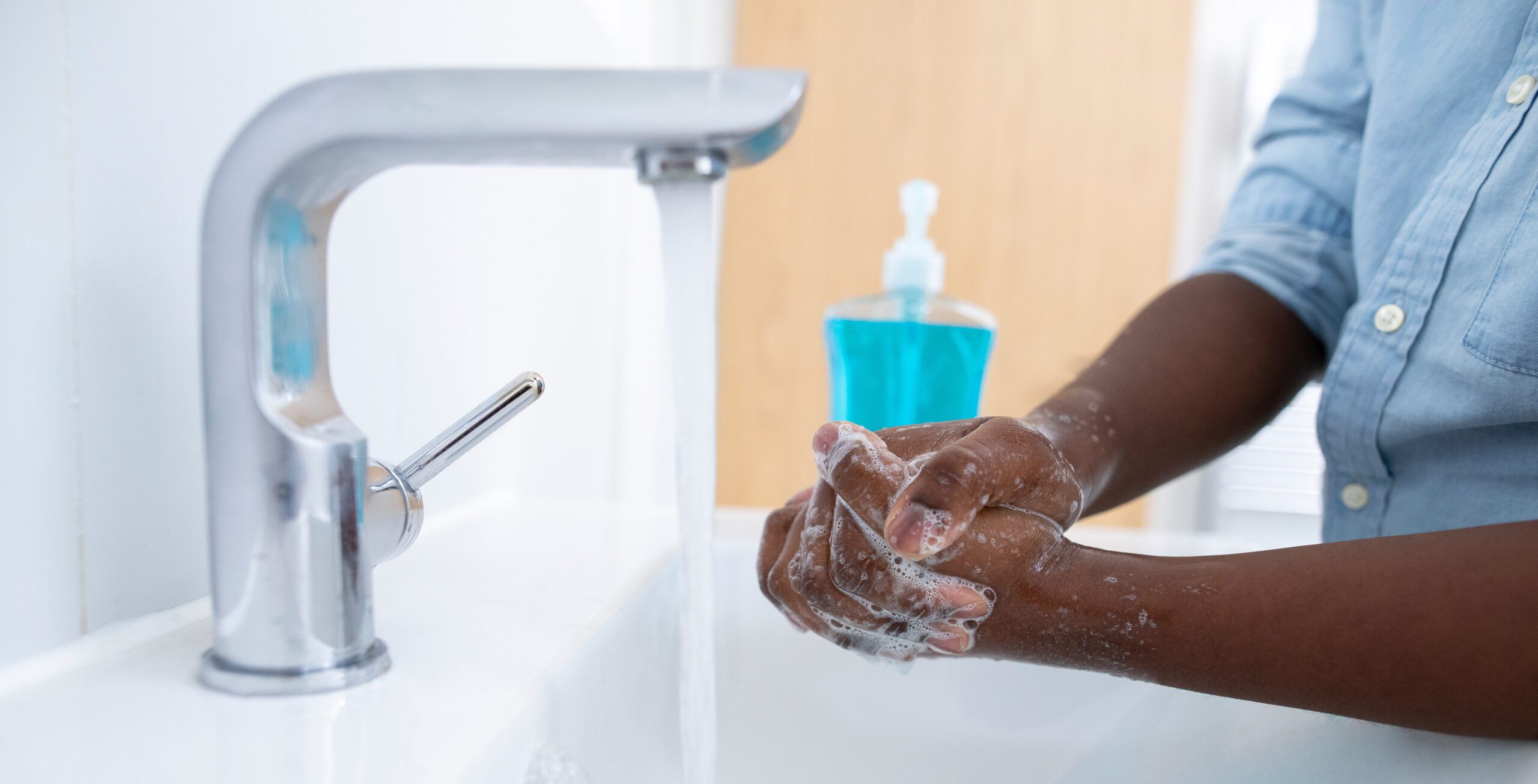We’re a professional restoration & cleaning company, so we get to use the big, fancy, expensive cleaning equipment to thoroughly rid properties of any possible traces of the coronavirus. We recognize, however, this is not the case for your average household, who may be working with a bottle of disinfectant spray and a roll of paper towels. Luckily, you won’t need much more than those, other than some, soap, gloves and (if available) a makeshift mask, to follow these ten tips to keep your home or business clean, disinfected, and COVID-19 free.
1.) Cleaning and sanitizing are NOT the same
In fact, they play two very different roles. Cleaning, which involves soap and water, works by removing germs, dirt, and other impurities from a particular surface. It does not guarantee to kill the germs, but mitigates the threat by lowering the number on a particular. Once the surface has been cleaned, and the number of germs has been reduced, it is time to disinfect. Using the chemicals found in Lysol, Clorox, and many other household brands, the disinfectant finishes the job by killing the germs.
2.) Tackle the surfaces touched most often. ALL of them.
Sure, you remember to clean and disinfect the door handles, your phone, and your wallet. What about the keyboard, faucet, flushing handle, toothbrush, remote control, microwave, light switch, pens, reusable water bottle, glasses, deodorant, candle (okay, now I’m just naming things lying around in my makeshift home office). The point is, any regularly touched surface is susceptible to hosting coronavirus and merits a quick wipe-down.
3.) Now tackle them again. And again.
There is no magic number of times you need to clean and disinfect the surfaces and objects around your home to rid your property of the coronavirus. It is up to you to regularly assess which surfaces are being touched most often, and address them accordingly. Doorknobs, tables, light switches, and other community surfaces, however, should be disinfected at least once a day.
4.) Declutter the area around your sink
When washing your hands, surviving traces of the virus may latch onto droplets of water flying from your hands as you wash them. This puts nearby kitchen or bathware, such as toothbrushes, dishes, and silverware, in danger of catching said droplets and carrying traces of the virus. Find a new home for your drying rack, toothbrush, or whatever else you leave by the sink. Once the region is cleared, remember to clean and disinfect thoroughly and regularly.
5.) “Rewearable” clothing is no longer rewearable
If you’ve got a sweatshirt, pair of jeans, or jacket that gets worn 2 or more times in between washes, it’s time to throw it in the laundry bin. When you wear a sweatshirt out to, for example, the grocery store, you’re exposing the fabric to the virus, which can then be traced back into the house. While cases of transmission through fabric have yet to be reported (as of April 6th), there is no harm in being careful, especially as we approach the allergy season that turns the elbow of your sleeve into a tissue.
6.) Choose soap and water over hand sanitizer
Whenever possible, choose to wash your hands thoroughly using soap and water, which kill, bind, and remove dirt, germs, and the coronavirus from your hands. Hand sanitizer, on the other hand, may kill the germs, but does not remove them from your hands, since you are never actually rinsing the sanitizer off of your hands. Hand sanitizer is best kept as an alternative that can be used on-the-go when soap and water are not available. Keep a bottle in your car, pocket, and desk, but always make your way to the sink when you can.
7.) Listen to the experts
Although we’ve compiled this list of advice using our knowledge of best cleaning practices, we owe our expertise to the scientists. Plenty of resources, such as the CDC or your state’s department of public health, offer extensive, research-backed guidelines for maintaining a clean and coronavirus-free home.
Between these seven practices, you’ll drastically reduce the risk of transmitting the coronavirus in your residential or commercial property. Above all else, however, use common sense!
If you decide that these precautionary measures are not enough to clean and disinfect your home, give us a call. With years of restoration and cleaning experience, along with a list of industry-standard certifications, our coronavirus cleaning and disinfection services will get the job done.


